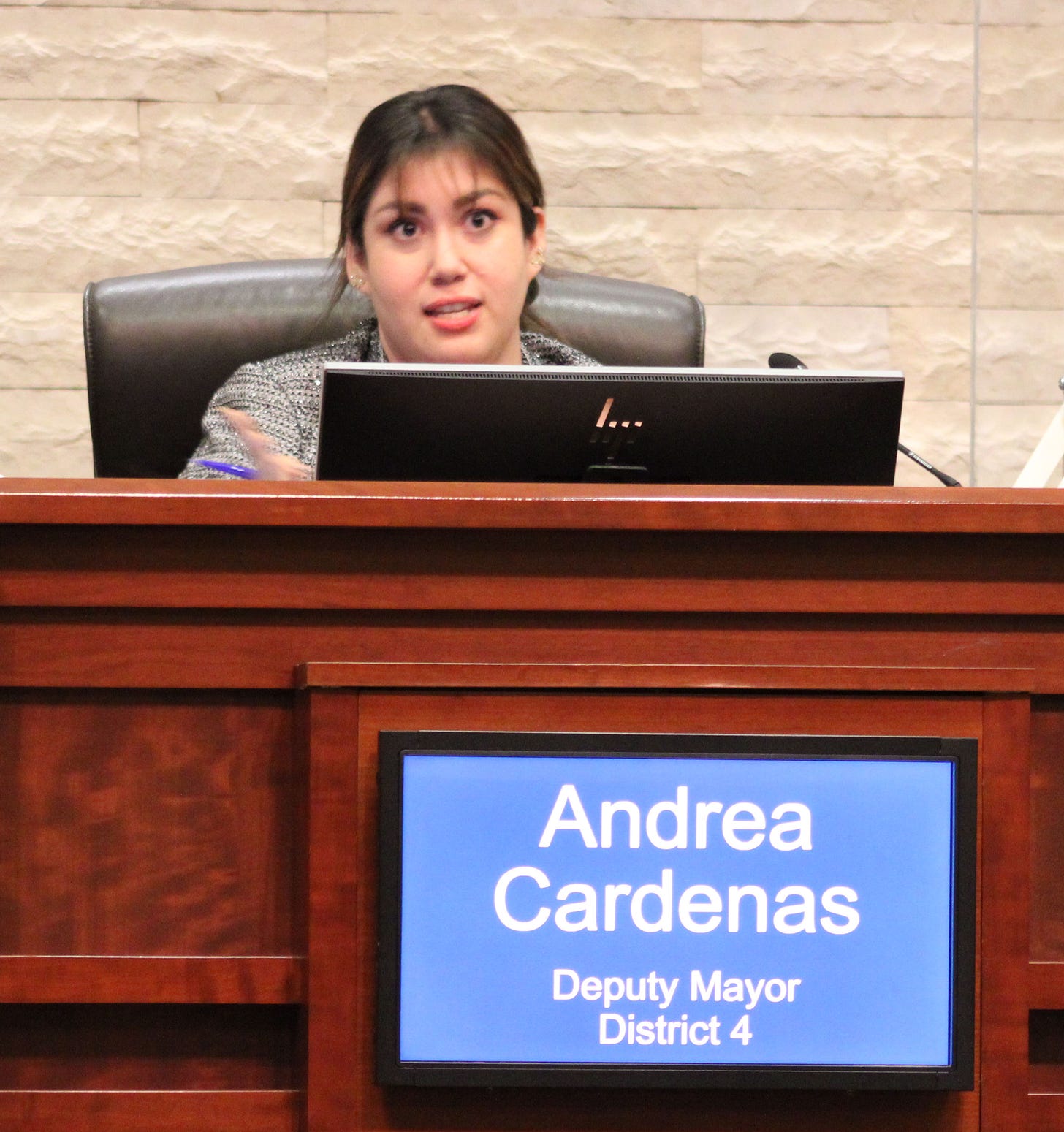Surveillance-Welcoming city leads to a meeting with the South Bay 'machine'
A journal of political discovery #3
Before I lived in Chula Vista, all that I knew about the city came from the windows of the red trolleys that took me to Tijuana for occasional day trips.
Then, in late January 2021, I relocated there from Huntington Beach with several members of my family who followed their jobs to the South Bay.
From our new rental home perched high upon a hill we enjoyed our backyard view of Tijuana, the bay, and the tall buildings of downtown San Diego.
I quickly noted the dearth of manicured lawns throughout the city, especially west of the 805 freeway, a common equity issue compounded by the high cost of ocean desalination water passed on to local ratepayers by the San Diego County Water Authority.
Chula Vista is San Diego County’s second largest city with 279,000 people living there. Its next-door neighbor, San Diego, is the county’s biggest city and home to 1.4 million people.
Chula Vista is a diverse border city with rich cultures—immigrants live in peace side by side with a scattering of flag-waving Trump supporters—at least in our neighborhood.
Public image
But Chula Vista’s elected officials and community leaders have struggled for years to form the city’s identity and public image.
They wanted Chula Vista to be seen as “more than a mere bedroom community [existing] in the shadows of San Diego.”
To help fulfil that dream, the Chula Vista City Council addressed the economic inequities faced by many of the city’s residents by vowing to expand their educational and business opportunities.
The plan included bringing a four-year university to Chula Vista and officially making it (the city) a “welcoming city” with help from Welcoming America, a non-profit that certifies cities with “inclusive policies, practices, and norms that enable all residents to live, thrive, and contribute fully — including immigrants.”
Chula Vista was officially declared a Welcoming City in 2019 and its elected council approved a plan to meet the standards of equity and inclusivity it was expected to uphold.

More recently, the city passed an important milestone when Gov. Gavin Newsom released a hold on 383 acres of city land that the state had reserved for housing. The land can now become the foundation for a university.
The governor’s decision was “a monumental step forward towards addressing a wide array of inequities that South Bay residents face daily,” said state Senator and former Chula Vista city councilmember, Steve Padilla.
Real-time crime center
In the meantime, the Chula Vista Police Department had been quietly building a mysterious “real-time crime center,” intended as an intelligence gathering hub that uses the latest high-tech surveillance technology, including automatic license plate readers (ALPR) and drones, to fight crime.

Back in 2007 the CVPD had already attached ALPR to some patrol cars (the current number is 4) in order to help find and track criminal suspects involved in car thefts and other crimes.
In 2017, without official city discussion or notice, the CVPD used its discretion to change contractors to Vigilant Solutions, “the largest (license plate reader) sharing network in the United States, if not the world,” the company claimed.
In 2018, a PR firm brought the CVPD’s new drone program (ironically permitted by a special waiver from the Trump administration) worldwide renown, “elevating its Police Department into the role of global consultant.”
According to the city’s police, the purpose of the drones, which can read a license plate from two miles away, is not surveillance but to increase efficiency and public safety by functioning as first responders.
The drones feed officers’ cell phones with previews of crime and accident scenes, helping them to broadly or in detail survey the area for context, look for crime suspects, determine if they are armed, and find missing persons.
Not so welcoming a city
Then, on Dec. 6, 2020, a month after city council elections, the Union-Tribune published an expose that would lead the city’s mayor and staff to drop Chula Vista’s Welcoming City credentials.
For the past three years, the U-T reported, the CVPD had allowed Vigilant Solutions to share its license plate data—including locations, drive times, dates, and license plate numbers, as well as other identifying information (excluding home addresses and names)—with over 800 law enforcement agencies across the country that would potentially use the data to deport undocumented immigrants, including ICE, Customs and Border Protection, and the California Highway Patrol.
The next day, my councilmember-elect, Andrea Cardenas (4th District), issued a statement decrying “systemic inequities, and a long history of institutional racism that have created distrust between our community and law enforcement agencies.”
She called upon the city council and the CVPD “to put an immediate stop to this data collection” and to work with “every stakeholder involved in this process to ensure that we truly uphold the vision of what it means to be a welcoming city.”
Immigrant rights and civil liberties activists were also outraged and called for an end to the ALPR program or at the very least the creation of a transparent system of checks and balances to prevent the threat to civil liberties related to data sharing.
It was in that context that shortly after moving to the city I joined several highly esteemed local civil liberties activists in a Zoom meeting with Councilmember Cardenas to talk about how to ensure that there would be a transparent approach to dealing with Chula Vista’s latest claim to fame.
Next: Our meeting with Andrea







Thanks for this, John. Very disturbing, and well done to local activists.